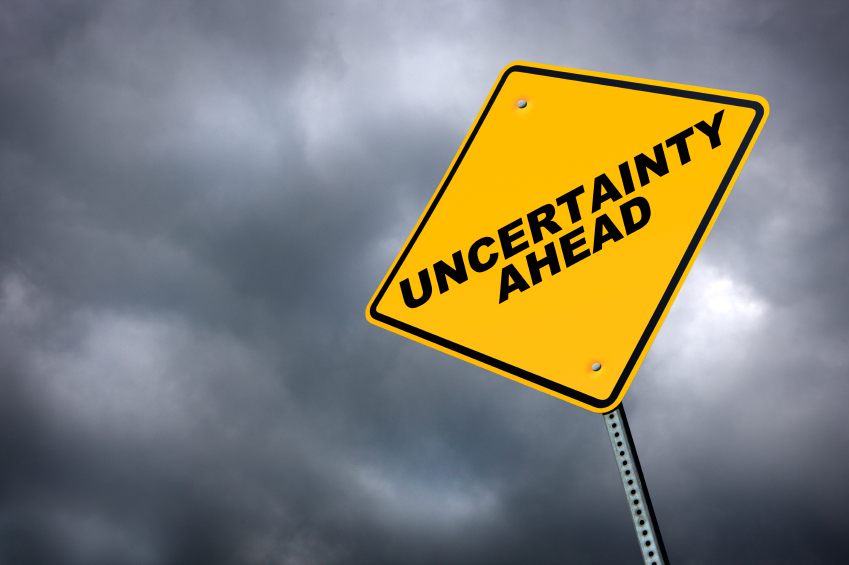Di seguito il riassunto in inglese di quanto andiamo elaborando da molto tempo.
At the origin
The most important financial asset class are bonds, because they are an activity in itself, and because they are the discount factor of all the other asset classes. At the beginning of the millennium the bond yield - measured by an index made up of 25 000 public and private securities – was 6 per cent, today it is less than 2 percent. At the beginning of the millennium the residual life of the above bonds was 5 years, it is now over 6 years. Buying at the beginning of the millennium, the major index of the bonds would therefore have gained 30% after five years (6% x 5 = 30%). Today we would arrive at 13% after six years and a half (2% x 6.5 = 13%). Let's imagine a portfolio divided fifty per cent in stocks and fifty per cent in bonds. If stocks had fallen by 30%, in the past after five years the entire portfolio result would have been zero. In other words, equity risk was abundantly covered by the yield to maturity of the bonds - so it was enough to wait.
Today, however, the yield to maturity of the bonds covers a fall of approximately 15% equities, i.e. half, and moreover in six and a half years. The prospects of asset performance will be greatly different from those which we have been accustomed along the past decades. Investment in fixed income no longer stabilizes the portfolio income with low risk. The bond yield is too low and its ascent will flex its prices in the future. Even the stock markets, after the rally due to the reallocation of portfolios in search of higher returns, shows a combination of performance and risk more uncertain.
Choose your bubble
The difference between 2000 and 2007 and today is the level of the yields of the government bonds. At the peak levels of stocks the yields were normal - 5% in the United States and 3.5% in Germany, compared to 1.5% and 0% today. In 2000 and 2007, one could observe with detachment the high level of stock prices, because the level of bond yields was high enough to move from the variable to the fixed income without risk. Today, however, the shift from variable to fixed income is risky because bond yields are low. The next movement in bond prices will be downward.
To put it in a more colourful language, in 2000 and in 2007 we had one market in a "bubble" and one that was not, but now both markets are in "bubble". The stock market bubble is defined as a price level higher than what can be expected from a reasonable flow of discounted dividends with yields that are normal. Bond bubble means a level that cannot be justified, once the economic growth and inflation become normal.
In which of the two markets in bubble should one stay? If the stock market falls, the bond markets remains stationary. If the bond market falls, as happened at some point in 2013, that of stocks falls too. To put it simply, the bond market is less dangerous. That is, in terms of the divergence of the market in a limited amount of time, the fixed income market, although very expensive, is less dangerous.
In case of a regular rise in bond yields we have a different picture. If bonds prices would go down, then the returns would go up, increasing in turn the discount factor of stocks, which would make them also drop. In this case, “cash is king”.
How to escape from a bubble driven economy
The concern is not deflation in the field of goods and services, but inflation in the field of assets. Stocks, bonds, and houses are expensive, In addition, in many countries the household debt has not been reduced in a sufficient measure. If we continue to support the prices of the assets through low, or even negative, rates and we continue with the purchasing policies of bonds, i.e. if central banks continue with current policies, we will push up their prices well away from their fundamentals. A policy which sooner or later leads to a crisis, because asset prices will go down until they find a foundation that supports them.
How can we bring back economic growth and avoid the bubbles? The growth cannot be low, because those who work will have to keep an increasingly aging population, i.e. those who work will have to finance a higher spending on pensions and health care. How to revive a high growth? According to some there is a "lack of demand" and therefore they propose more public spending, according to others, there is a "lack of supply" and therefore they propose a liberalization of product and labor markets. For the sake of labels, we can call the first "Keynesians", and the second "Schumpeterian".
If entrepreneurs do not trust, do not invest and do not hire. The cost of money becomes less important than the expectations around the effective demand. It follows that the cost of money, even if it is zero, becomes less important. The same goes for families, they return to consume, only if they think that in the future they will have a higher income. And here comes the idea that, in a world overwhelmed by uncertainty about the future, it must act who has a long term horizons and has no financial constraints: the public spending deficit. The state spends more than it collects in taxes generating additional demand from nothing.
It can be argued that public spending deficit, once it has accomplished the task of reviving the economy, ceases? Public spending creates new interests that want to be maintained at the highest level. More public spending rather than being cyclical, functional to smoothing out the variations in the economy, becomes permanent. And a high-debt economy is vulnerable to shocks.
If government spending were not generic but dedicated - as you would with a program of investment in infrastructure financed by the European Investment Bank guaranteed by the European Central Bank, investments that would not be counted as public debt – we would have satisfied the Keynesian point of view, pointing his finger on the lack of demand. Public spending on infrastructure has also the advantage of having a high multiplier – i.e. it generates an income greater than the initial outlay. With a market of product and labour liberalized innovations should expand quickly. By doing so, we would have satisfied the Schumpeterian point of view, pointing his finger to supply shortages.
What to do in the meantime?
The majority of fund managers does not beat the indexes, i.e. the "active" investment. Those who do not "mimic" the indexes, because they prefer certain securities to other, rarely manage to do better. From which it is inferred that then we might as well play the indices. ETFs - Exchange Trade Funds - are products that mimic indexes, meaning they invest just like the composition of the latter, and do so with a very low cost. The we have the investment "active" who mostly do not beat the indexes and that cost a lot, say two per cent, because you have to pay for the research and the managers, and "passive" investments that go exactly like the indexes and that cost little, say zero two per cent of assets, because they are devoid of research and are produced automatically, because you need to pay only one off some computer scientists.
Title X goes up, while the title Y goes down, then the first weighs more in the index and is bought, the second weighs less and is sold, and it is "the machine" that thinks. It (the machine) is not interested in whether the rise and fall are justified, it follows the price as the best of the information. Stated differently, it implies that prices always reflect values. In the case of active investments you must do better by at least two per cent more than the index to have the same index result, in the case of ETF you lose zero two percent to do as the index.
To beat the indices you must have the best information: Company X will be fine, while Y will go wrong. Information that is difficult to have and systematically process. More precisely, once you will be right and another wrong, results will eventually cancel out. Even if we assume that you have frequently the best information, after some time everyone will have them, and thus your initial advantage would be cancelled. So not only can you go wrong in the choice of repeated bets, but even if there was a way to do better than average, you would take the effect of the imitation process, which eliminates the higher performance, which in turn becomes something temporary. Just like in the field of real economy, where profits are the result of a temporary monopoly that is eliminated by competition.
If stocks and bonds are badly placed, might we consider, as an alternative, an investment in gold and real estate? Gold is an option, and its weight in a portofolio can only be modest, while the real estate investment usually has a high weight.
Why gold should cover – as an option - the negative eventualities? The volatility of gold (the average of the positive and negative deviations from the mean) has been three times the volatility of the euro towards the dollar. If you think that traditional investments can go very badly, then, buying gold, you would enjoy the advantage to be able to buy a quantity three times less the currencies that you would have to buy in order to have the same effect. This does not mean that gold has a value in itself, because is more “real” than paper money, issued at the discretion of the central bank, the so-called fiat money. Gold is worth just because someone else may buy it. So we have a subjective value. Gold does not produce an income, such a dividend, a coupon, or a rent. Then its price is not dependent on other values, but only on the perception of who exchanges: We could say that the price of gold does not have a true foundation. Why gold is so volatile? The gold produced each year (the flow) is equal to tiny percentage of that extracted from the dawn of time (the stock). The amount of new gold supply is rigid, so changes in demand will discharge violently (up and down) on price. The rigid offer is at the origin of the volatility of the gold price, which is the source of its value as an option.
The first home may be owned and its inhabitants does not pay the rent. The value of the house is therefore the (avoided) rental stream discounted by an appropriate rate. The real estate investment works if you sell your house at a higher price than that paid. At that point you have to look for a new home, but, if the prices of all homes have risen, you do not gain anything, because you pay more the new house: gains emerge only if you go to live in a worse house that costs less. In short, the real estate gains may emerge only on the houses where the owner does not live. Let's imagine that a second house is purchased. The owner receives a rent, as if it were a dividend or a coupon, waiting to sell when the price grew more than the present value of the flow of rents, but we can not say that the housing market pays the rent with the certainty with which the financial markets pay dividends and coupons, and even we can not say that it is just as a liquid market, if one were to sell.
Then?
Where we go to find a systematic return advantage if bonds have a zero yield, shares are expensive, indexes cannot be beaten, and gold and real estate are not an alternative? Where are the opportunities not yet in the public domain?
© Riproduzione riservata











